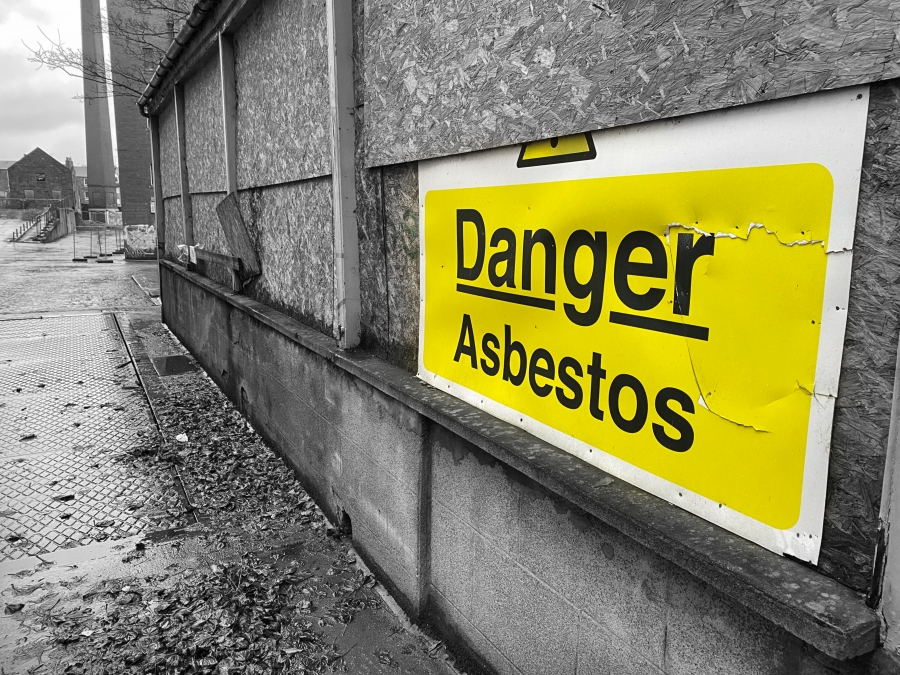People need to be extra careful about the presence of asbestos on the walls and other surfaces when doing some renovations or buying a home. Asbestos is a naturally-occurring mineral used in building materials. Since asbestos exposure can lead to a number of severe diseases, the use of the mineral is now curtailed. Asbestos is odorless and colorless in nature, so you can’t see it by your naked eyes. However, there are signs that will help you determine whether or not your house is contaminated by this toxic element.
Read on below to learn about the indications that there’s asbestos in your house.
1. You Have An Old House
Materials with high asbestos content have been used in most homes that were built prior to the 1980s. Insulation around sheeting, fireplaces, pipes, boilers, and ducts in these houses commonly contain this mineral. Building components in old homes that also use asbestos include the following:
• Pipe cement
• Siding
• Roof shingles
• Floor tiles
• Ceiling tiles
If building materials that contain asbestos get broken or damaged in any way, you can be exposed to the said mineral. Thus, if your house was constructed before the 1980s, it’s important that you get it tested for asbestos.
2. Your Home Has Vinyl Tiles
When compared to other flooring tiles, the vinyl ones are more likely to contain the toxic asbestos mineral. See if your house has vinyl tiles by inspecting your flooring. Note that during the 1980s, having a vinyl type of flooring was popular. That means the probability that your flooring has asbestos is high if you’re living in an old home.
3. You Have Corrugated Roofing Installed At Home
Corrugated roofing in your home may also put you at risk for asbestos exposure. To make the materials weatherproof, heat-resistant, and more durable, manufacturers generally add asbestos to corrugated roofing sheets.
Living in a home that has corrugated roofing sheets still comes with health hazards regardless of their durability. Fire and harsh weather conditions may damage your roofing, and that’s when asbestos fibers get released to the surroundings. Infection and inflammation in your entire body, especially the lungs, may result from inhaling them.
Call a professional that specializes in the disposal of asbestos roofing as early as you can if you need to have the corrugated sheets in your home’s roofing replaced.
4. Your House Used Cement Sheets
Asbestos is also most likely present in older houses with cement sheets. Vent covers, cover traps, and light bases are common areas around the sheets that contain asbestos. It’s best to get help from an asbestos testing and abatement company in determining the toxic mineral’s presence in cement sheets.
5. You Have Cement Water Tanks
If your home has a water tank, consider getting it tested for asbestos and replacing it if it’s damaged. Five to ten percent of asbestos may be present in cement water tanks in older houses.
6. Your Home Used Pipe Insulation
Because of their insulating and fireproofing properties, white or grey asbestos was utilized to insulate pipes before or during the 1980s. If your property was built around that time, your pipe might contain huge amounts of asbestos, so make sure to have it checked for the type of insulation used. When you find out that asbestos was used for pipe insulation in your home, never do your own plumbing and always call for expert help.
Asbestos At Home: When Can It Be Dangerous?
Asbestos fibers generally won’t be released by a material in good condition. However, health hazard where none was present before may be created when the material gets disturbed. Leave an asbestos material alone if it’s in good condition.
The problem is that asbestos material may really get damaged over time, and that’s when the danger comes. Asbestos fibers will be released when an asbestos-laden material has been scraped, sawed, or sanded into a powder. Asbestos mostly crumbles easily if handled, creating a health hazard.
How To Know If Asbestos Poisoning Happened
You’ll have a risk of asbestos poisoning if you’ve been experiencing asbestos exposure for years already. It’s a condition that most people might not realize they have. Asbestosis can also seem like just mild poisoning at first.
Feeling of constriction in the chest, a persistent cough, and shortness of breath are some of the symptoms of asbestos poisoning. Clubbing or the widening of the fingers at the tip may also be noticed.
Immediately see a physician if you’ve observed asbestosis symptoms.
The Bottom Line
Indeed, being exposed to asbestos fibers will make you at risk of getting ill. These can have severe adverse effects on anyone’s health. Keep the above signs in mind if you want to keep yourself and your family safe and healthy. The above information can help you recognize the asbestos presence in your home accurately, allowing you to immediately take corrective action.
